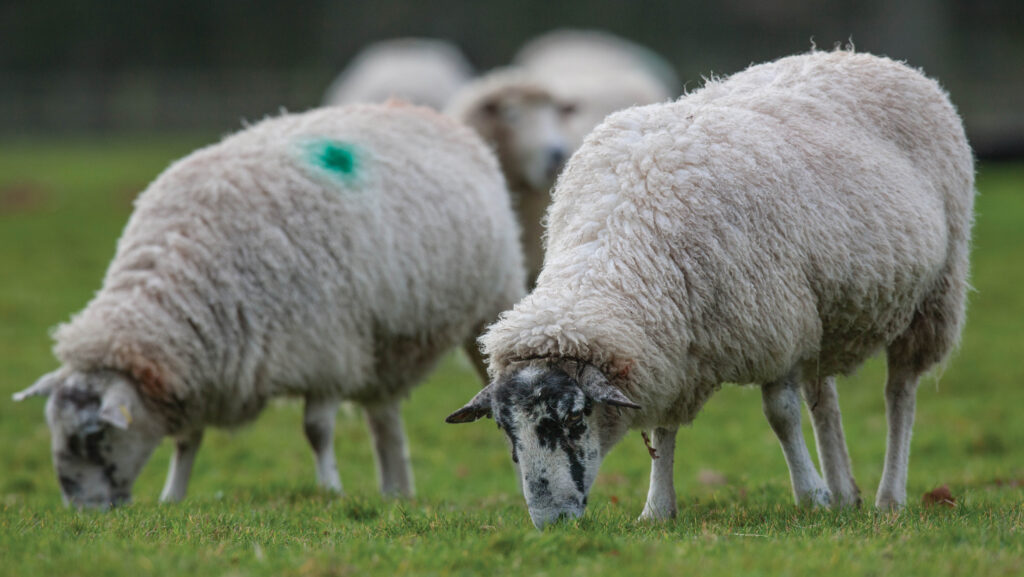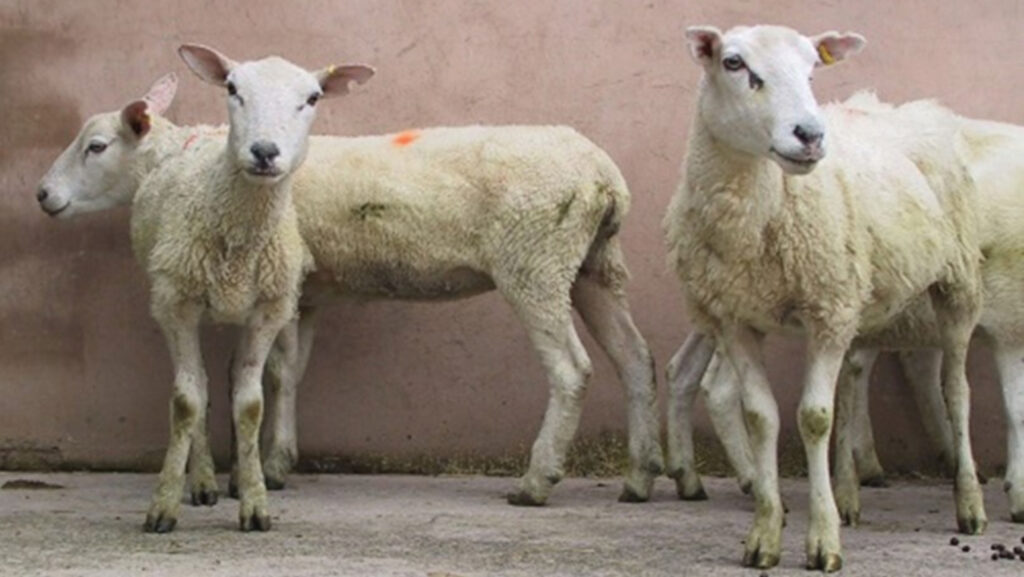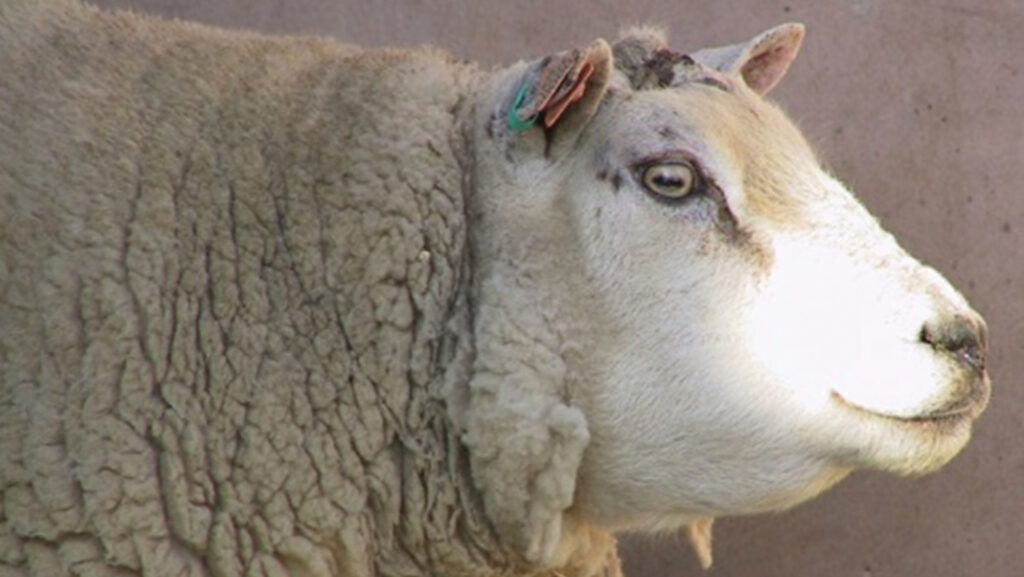How to deal with rising haemonchus cases in sheep
 © Tim Scrivener
© Tim Scrivener Increased reports of a blood-sucking worm affecting performance and mortality rates in flocks should be met with an evidence-based approach before rushing for the drenching gun.
Testing and detective work is vital this autumn and winter if the UK sheep industry is to tackle an increase in Haemonchus contortus (barber’s pole worm) sustainably.
This is according to flock health experts, who say changes in climate are causing the parasite to be found on farms previously considered “too far north”.
See also: Q&A: What is haemonchus and how to prevent and treat it
Health risks
Haemonchosis (the condition caused by the Haemonchus contortus worm) can be fatal in sheep following sufficient intake of worm larvae over a short timeframe.
Death can follow weight loss, anaemia, weakness and lethargy.
One adult worm can remove 0.05ml of blood a day from a sheep. A ewe with 5,000 Haemonchus contortus worms could lose 250ml of blood in one day.

Sheep with haemonchosis © Nadis
But rather than panicking, farmers are urged to make sure they know what they are dealing with before treating their ewes.
Vets warn that liver fluke symptoms are very like haemonchosis, and forecasts suggest liver fluke risk is high this winter after the wet summer and autumn.
Industry message
Industry body Sustainable Control of Parasites in Sheep (Scops) told Farmers Weekly it would be hugely counterproductive and a “massive backward step” for the industry if mature ewes were blanket-treated with anthelmintics on a mere “hunch”.
Haemonchosis and liver fluke can be hard to distinguish, and both can result in sheep with bottle jaw, explains independent sheep consultant Lesley Stubbings of Scops.

Ewe with bottle jaw © Nadis
“If you’re worried about thin sheep going to the tup, don’t jump to conclusions and think all ewes must be treated for Haemonchus,” she says.
“It’s very similar to liver fluke and, after a wet year, we are likely heading into a significant liver fluke risk period.
“Sheep farmers have done a great job testing and monitoring the condition before treating, and we don’t want a return to unnecessary blanket dosing of sheep, which will speed up anthelmintics resistance.
“Investigate properly and only treat if needed. After all, if haemonchus isn’t the problem, you are not solving anything.”
Tackling the issue
Lesley says sheep farmers concerned about ewes failing to gain condition between weaning and tupping, or even going backwards, should involve their vet.
“There are many reasons for thin sheep or condition loss. Just because there is a lot of talk about Haemonchus contortus, it doesn’t mean your farm has it, and even if it does, it doesn’t mean that it’s causing disease.”
She advises checking the following:
- Does the farm have a history of liver fluke? Liver fluke has similar symptoms including bottle jaw, anaemia and weight loss.
- Are sheep scouring? Haemonchosis does not cause scouring.
- Have any sheep died? If sheep are dying, get post-mortems done to determine whether a parasitic infestation, an iceberg disease or another issue is the cause.
- Is forage sufficient Wet weather has challenged grass production and sheep performance for many farms this year and could be the reason for any condition loss.
- Is there a pattern or trend to the way ewes are struggling? Are the affected sheep from the same ram, or sale, or area of the farm? And do they have healthy mouths?
- Are they showing signs of anaemia? The colour of the mucous membrane can act as a proxy for anaemia, which is a symptom of haemonchosis. The paler the membrane, the greater the chance haemonchosis is a factor.
Faecal egg counts
Lesley recommends taking faecal samples and getting faecal egg counts (FECs) done on ewes if a problem is suspected.
This will help rule out other parasites. For those farmers already doing this, she advises the following:
- Ask the vet to check for both liver fluke and worms in the faecal sample. Be sure to specify that both want checking.
- In the earlier part of the autumn, a coproantigen test may be most appropriate because it may be too early for fluke to be laying eggs. Later on, a fluke egg detection test can be used.
- Check the overall eggs per gram (epg) count of the FEC. Very high FECs could be a sign of haemonchosis in sheep, because adult female Haemonchus contortus worms can lay 10,000epg or more. However, a study by the Animal and Plant Health Agency (Apha) found that some high FECs were not caused by haemonchus, while other, lower egg counts were caused by this worm species. If clinical signs of haemonchosis are present, then samples with lower counts should be considered for confirmatory peanut agglutinin (PNA) testing.
- If egg counts are very high and liver fluke is ruled out, send a sample to Apha for a PNA test, which identifies fluorescent Haemonchus eggs. This will confirm (or rule out) Haemonchus. This test is subsidised by Apha and costs £20.
- If haemonchosis is confirmed, treatment should be discussed with the vet. Broad-spectrum wormers (clear, white, and yellow) can be used, but closantel (normally used for liver fluke) will also target Haemonchus contortus. Always follow up treatment with a post-drench efficacy check to see if it was effective.
- In the longer term, affected flocks may consider a vaccine available in the southern hemisphere (Barbervax), which can be imported under special licence via the farm vet.
Rise in cases
Researchers at the Moredun Institute have suggested Haemonchus contortus could be on the rise because milder weather in the UK means the worm can now overwinter on pasture.
Previously, it would have had to winter inside a sheep, as it does in countries such as Sweden and Switzerland.
While the parasite is not completely new to northern England and Scotland, an ability to survive winters on pasture would allow it to proliferate, they added.
Fiona Crowden at Scotland’s Rural College’s Aberdeen post-mortem laboratory, and Ben Strugnell of Farm Post Mortems, both reported a spike in haemonchosis submissions and diagnoses this summer and autumn.
Back in August, one SRUC laboratory had four submissions in one week of haemonuchus worms visible in the abomasal washes and worm counts of 13,650 to 64,800epg.
Fiona says: “We have seen a lot of worms in general this year and lambs not growing as well as normal. Warmer and wetter weather has likely contributed to more eggs developing on pasture.
“Adult sheep do not develop immunity to haemonchus like they do to other parasites, so ewes contribute to pasture contamination as well.”
Haemonchosis submissions to Apha, 2012-2024 |
|||
|
Year |
Cases in UK |
Cases in northern England |
Cases in Scotland |
|
2012 |
32 |
3 |
4 |
|
2013 |
16 |
3 |
– |
|
2014 |
25 |
8 |
1 |
|
2015 |
13 |
5 |
1 |
|
2016 |
15 |
2 |
1 |
|
2017 |
37 |
3 |
2 |
|
2018 |
22 |
3 |
2 |
|
2019 |
28 |
2 |
1 |
|
2020 |
36 |
5 |
4 |
|
2021 |
41 |
5 |
6 |
|
2022 |
152 |
26 |
7 |
|
2023 |
102 |
29 |
12 |
|
2024 (Jan-Aug) |
82 |
15 |
10 |
|
Source: Apha Surveillance Dashboard |
|||
